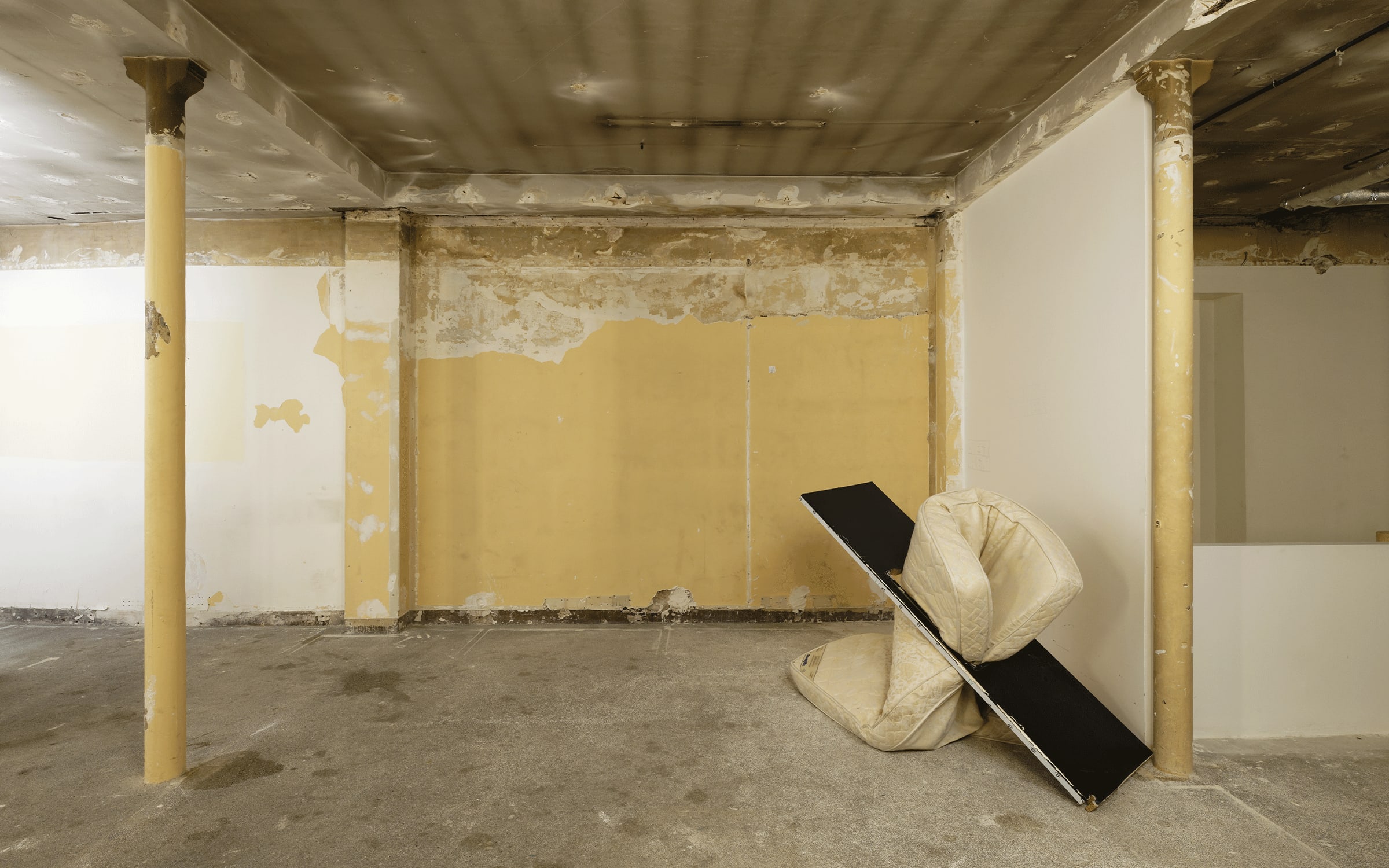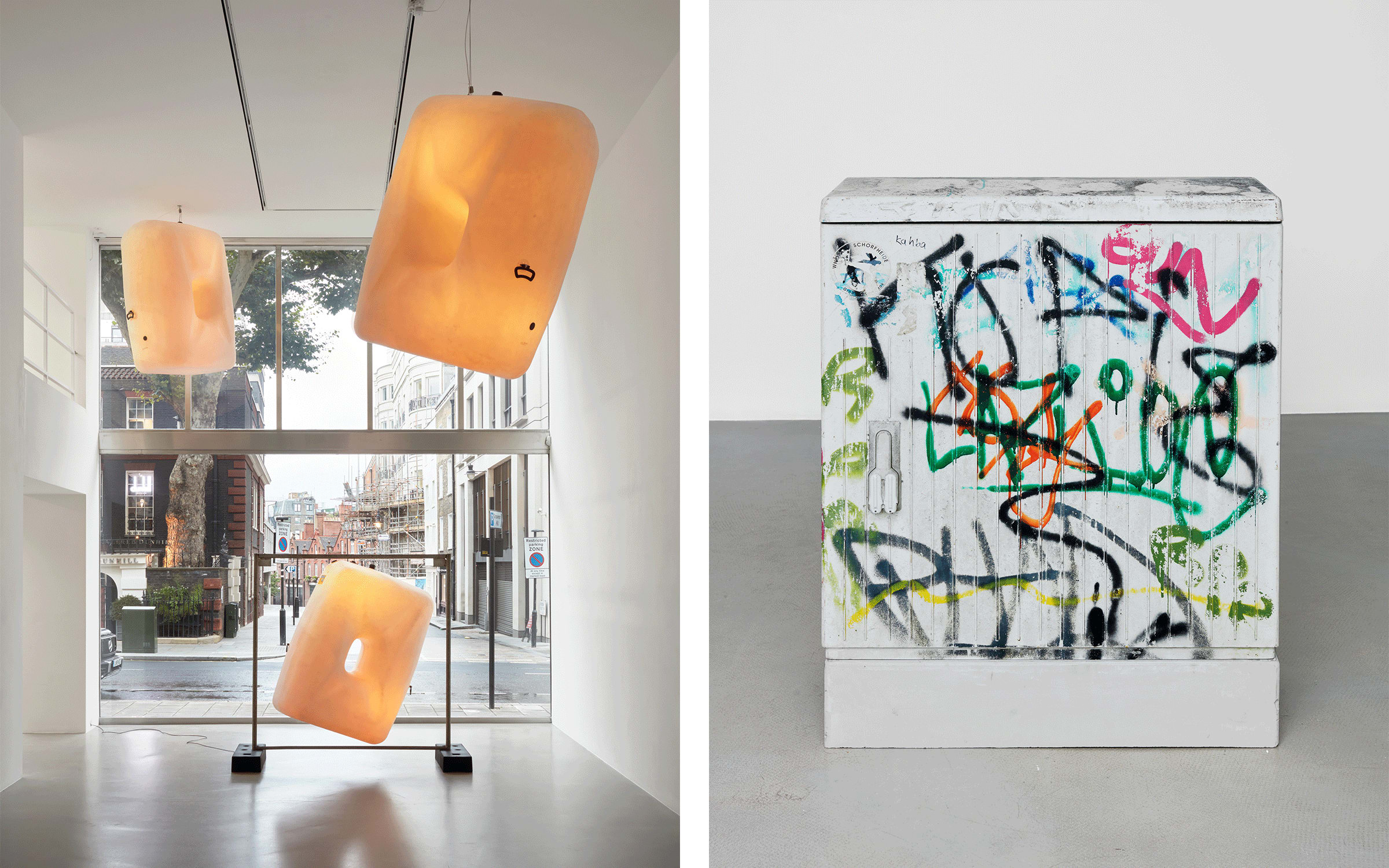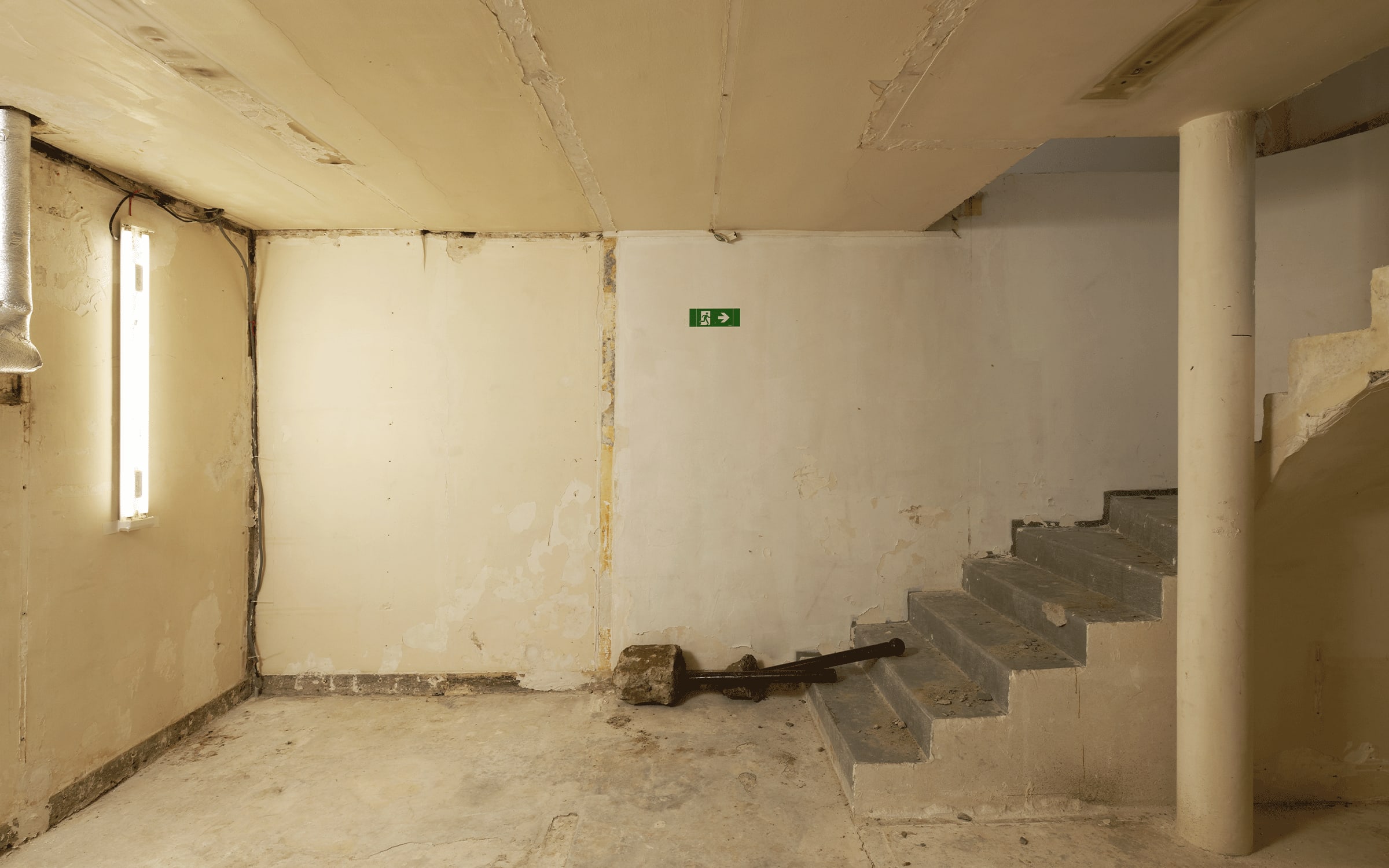‘The curious thing about the readymade is that I’ve never been able to arrive at a definition or an explanation that satisfies me.’ So said Marcel Duchamp in a 1961 interview with the curator Katharine Kuh, discussing a body of his work that includes Bicycle Wheel (1913), Bottle Rack (1914), and most notoriously, his porcelain urinal, Fountain (1917), pseudonymously signed R. Mutt. Consisting entirely of mass-produced items used in daily life, these pieces radically expanded the possibilities of what art and artistic labor could be, while also placing a new and crucial emphasis on the contextual frameworks in which they exist.
Those who seek to pin the elusive French artist down often point to an entry he wrote on the readymade (under the initials M.D.) in André Breton and Paul Éluard’s Abridged Dictionary of Surrealism (1938). It runs as follows: ‘an ordinary object elevated to the dignity of a work of art by the mere choice of the artist.’ Useful as this definition may be – and there are whole PhD theses that hang on it – for Duchamp it was clearly insufficient. As he remarked to Kuh: ‘There is still magic in the idea [of the readymade], so I would rather keep it that way.’

Over a century on from the revolutionary moment when Duchamp, as he put it, ‘had the happy idea to fasten a bicycle wheel to a kitchen stool and watch it turn,’ there remains something about the readymade that is irreducible to a rigid set of rules, or to a cold conceptual logic. Perhaps the reason for this is that it’s an artistic strategy that’s by necessity always reinventing itself. To work with so-called ‘ordinary objects’ today is, of course, to reckon not only with Duchamp’s legacy, but also with how it’s been developed by his multiple and often strikingly heterogenous heirs.
Compare and contrast, say, Arman’s project Le Plein (1960), which repurposed Galerie Iris Clert in Paris as a receptacle for accumulated trash, and Jeff Koons’ New Shelton Wet/Dry Doubledecker (1981), a pair of gleaming new vacuum cleaners sealed in a glass vitrine like totems to some consumer deity. Then there’s the fact that many of the objects that crowd our world would have been unrecognizable even a few short decades ago. In the words of Darren Bader, a contemporary artist whose witty, disarming works notably include Lasagna on heroin (2012), a slab of the titular pasta dish injected with a dose of opiate: 'notions of high art and daily life are not what they were.’
The objects that appear in the poised, mutedly elegiac work of the American sculptor Michael E. Smith – worn sweatshirts, exhausted furnishings, defunct tech – speak of the endless churn of material production, consumption, and depletion that characterizes our current, late capitalist era. In most contexts, they’d be destined for landfill, but contemplated for long hours in Smith’s studio, then taken to a gallery space where the artist arranges them into sparse sculptural propositions that subtly activate the surrounding architecture, their visible traces of human use take on a tender, haunting aspect.
Untitled (2023), a work made for Smith’s current, solo show at the Henry Moore Institute in Leeds, UK, is composed of two not-quite-identical round dining tables taken from the artist’s home. Stacked one atop the other, the surfaces upon which family meals were once shared are now pressed blindly together, like palms in prayer. The underside of the upper, inverted table is marked with the scuffs and grime of daily household communion, while its base supports a rinsed-out plastic milk carton, containing a cluster of red glowing LEDs. What is missing here is nourishment, warmth, and above all people, and this makes Smith’s work feel oddly spectral. Untitled is the readymade as ghost.

If Smith is in the business of salvage (a word that shares an etymological root with ‘salvation’), then in a different way so is Ser Serpas. For her 2021 solo show at Balice Hertling, Paris, the artist combed the city for discarded objects, including an old bathtub, metal shop shutters, and a section of wooden spiral staircase, and then installed them in the gallery’s exhibition spaces during an intimate performance that she’s described as involving ‘music, a lot of caffeine, being alone in the room and treating it like my own little club.’ When these disparate objects were brought together into sculptural assemblages, significantly it was without recourse to welding, screws, staples, or any other fixing techniques. One of the resulting works, conjoining fabricated excesses literal end to a mean (2021) is composed of a stained mattress bent double and pushed through a hole in a broken door, while the title of another piece, real seduction state in consequence practically far in, two poles tossed down a staircase damaging the steps, and left as they are (2021), serves as a fitting description of the role that gravity plays in her installation methods, and her creation of (anti-)form. While Serpas’ readymades might be interpreted as proxies for human bodies – rejected and reclaimed, subject to penetration or a violent fall down a flight of steps – this was also a show about Paris as an object (or rather hyper-object) in perpetual flux: one that sheds its unwanted parts like a snake sheds its skin.
Urban life – and the urban fabric – is also key to the readymades of the Swedish artist Klara Lidén. Perhaps best known for installing gunge-encrusted civic trash cans in white cube exhibition spaces, which bring a reminder of the dirt and chaos of the street into pristine and highly controlled interiors, her 2020 exhibition ‘Turn Me On’ at Sadie Coles HQ, London, featured a series of decommissioned junction boxes – plastic housing for a city’s wires and fuses, its electric arteries. Once as pristine as any Minimalist sculpture, these objects’ grubby, graffiti-tagged surfaces indicate the long years they spent standing on the sidewalk, mute witnesses to – and recorders of – urban history. But if Lidén’s junction boxes look back, then in our age of energy crisis they also perhaps point forward, to a time when the lights finally go out, and our 24-hour metropolises grow dark, cold, and still.

The Black American artist Cameron Rowland’s floor piece Pacotille (2020) is fashioned from of a tangle of 18th-century Venetian glass beads, on which rests a number of contemporaneous, British-manufactured brass manillas, a ‘U’ shaped form of one-directional currency, which like the beads, were used by Europeans to purchase African slaves, but were not accepted as payment for European goods. While Pacotille is, by most measures, a readymade, its status as an artwork is surely secondary to its status as a historical deposit that speaks to horrific injustices past and present. Herein lies its charge. The piece poses a set of uncomfortable questions about how we might react to it: is it appropriate to value these objects for their abstract aesthetic appeal, or even to derive a complicated form of intellectual pleasure from Rowland’s conceptual and political acuity in presenting them in a gallery space? Or are such responses, of the kind that are usually so central to the experience of art, in this case at best a distraction from what’s really at stake?

If there is, as Duchamp said, ‘still magic in the idea’ of the readymade, then it’s perhaps appropriate that one of the most ambitious examples of the form in recent years turns on what we might term a disappearing trick. Roger Hiorns’ ongoing work A Retrospective View of the Pathway (2016-) is currently composed of three military aircraft, buried beneath the earth at sites in the UK, the Netherlands, and the Czech Republic, with more interments to come. In part, the project is about putting deadly weapons beyond use – an updating of the Biblical injunction to ‘beat swords into ploughshares’ for the age of death from above – and in part a transformation of found objects into objects that have been (purposefully) lost. Most of all, though, this is a work addressed not to us in the present, but rather to our distant descendants, who may one day happen to dig the planes up. What they make of them depends, ultimately, on what survives of our current, increasingly imperiled civilization – on whether they can still look at a seemingly ‘ordinary object,’ and understand that it’s a work of art.
Jeff Koons is represented by Pace Gallery (New York, London, Hong Kong, Seoul, Geneva, Palm Beach, Los Angeles).
Darren Bader is represented by Andrew Kreps Gallery (New York), Blum & Poe (Los Angeles, New York, Tokyo), Sadie Coles HQ (London), Galleria Franco Noero (Turin), and Société (Berlin).
Michael E. Smith is represented by Andrew Kreps Gallery (New York), KOW (Berlin) and Modern Art (London).
Ser Serpas is represented by Karma International (Zurich), Balice Hertling (Paris), Essex Street/Maxwell Graham (New York) and LC Queisser (Tbilissi).
Klara Lidén is represented by Sadie Coles HQ (London), Galerie Neu (Berlin), and Reena Spaulings Fine Art (New York).
Cameron Rowland is represented by Galerie Buchholz (Cologne, Berlin, New York) and Essex Street/Maxwell Graham (New York).
Roger Hiorns is represented by Luhring Augustine (New York) and Annet Gelink Gallery (Amsterdam).
Michael E. Smith
Henry Moore Institute, Leeds
Until June 18, 2023
Tom Morton is a writer and curator based in Rochester, UK. He is a regular contributor to frieze and ArtReview, and in 2022 curated the group exhibition ‘The Kingfisher’s Wing’ at GRIMM, New York.
Published on May 19, 2023.
Caption for full-bleed images, from top to bottom: 1, 2, 4. Installation views of Michael E. Smith’s exhibition at Henry Moore Institute, Leeds, 2023. Courtesy of the artist, Modern Art, KOW, Andrew Kreps Gallery, and Henry Moore Institute. Photographs by Rob Harris. 3. Installation view of Klara Lidén’s exhibition ‘Turn Me On’ at Sadie Coles HQ, London, 2020. Photograph by Robert Glowacki. © Klara Liden.